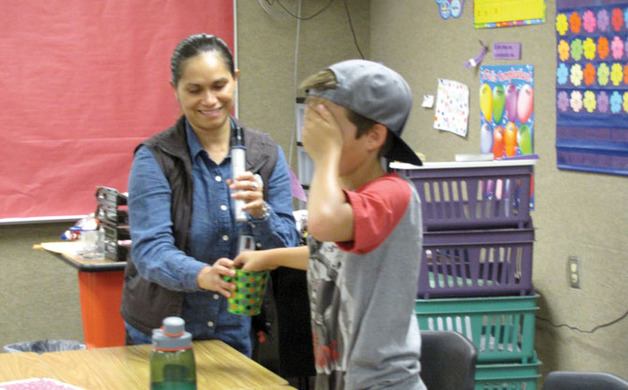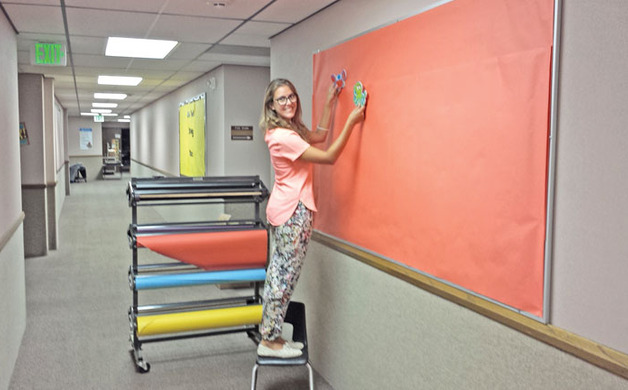International Teachers/Visitors Bring Culture To Dual Immersion Programs
Oct 23, 2014 02:20PM ● By Julie Slama
Maria Jose Fabre Gonzalez, the newly appointed Spanish Embassy education counselor, asked Alta View dual immersion first-graders what their names are in Spanish.
Alta View Elementary and Silver Mesa Elementary recently hosted the newly appointed Spanish Embassy education counselor.
As part of her duties to oversee all education regarding Spanish language and culture in the U. S. and Canada, Maria Jose Fabre Gonzalez talked to students and observed instructors from Spain teaching in two Canyons School District dual immersion Spanish schools.
She was joined by Sonia Cabrerizo, the Spanish education specialist in Utah and the Spanish Embassy attaché from Los Angeles.
“I like the way the teachers interact with students and get their attention,” Gonzalez said. “The students speak Spanish very well, very fluently and are learning the right way.”
School District Spanish Dual-Language Immersion Director Ofelia Wade said that she hopes this visit will give Gonzalez a better idea of how the dual immersion program works and how Spain can prepare teachers to teach in Utah. At the same time, she wants to know how Canyons School District officials can learn how they can best support the Spanish teachers.
The visit coincides with the International Conference on Immersion Education, scheduled for Oct. 15-18, where Silver Mesa will receive the same distinction that Alta View has achieved: being named an International Spanish Academies school, identifying its excellent program.

Silver Mesa teacher Rosario Sanchez teaches fifth-grade Spanish dual immersion students.
At Silver Mesa, two new teachers, one from Mexico and one from Spain, have teamed up with three other teachers from Spain to give Silver Mesa Elementary dual immersion students more cultural experiences.
“These teachers bring culture to the school that we wouldn’t have otherwise,” Principal Julie Fielding said. “The teachers typically bring items from their countries to share with students so they are learning their culture at the same time as learning the language.”

The teachers are contracted through an agreement that allows them to work in Utah for three years, renewable after each year. A representative from the Utah State Office of Education initially screens candidates before school principals interview them for positions.
International teachers are trained in strategies for teaching American students and curriculum before they begin.
Fifth-grade teacher Rosario Sanchez said that school procedures in Utah greatly differ from those in Mexico.
“Here, students switch rooms, so they experience different teachers teaching some subjects,” she said. “They have choices for lunch, and they have two recesses instead of one. I think when the kids move around more they have more focus on what they are learning.”
She is impressed with the students’ Spanish.
“It is amazing. The students speak well and understand. They translate for their parents. I thought I’d be teaching Spanish, but they already know it, so I teach the subject in Spanish,” Sanchez said.
Second-grade teacher Victoria Llongo, of Spain, said the teaching style is different in Utah compared to Spain.
“Classrooms here are really decorated (with) a lot of visual aids,” she said. “It helps students to learn. The teaching style is very active. We teach all the vocabulary, content and everything at one time. The students speak and participate. They collaborate. It’s very different and enriching.”


